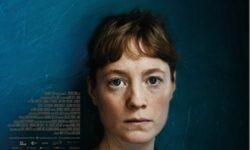KOCHI:
Inside Fort Kochi lies Odatha, a historical botanical garden that was the starting point of Hortus Malabaricus, a 12-volume study of Kerala’s medicinal plants. Then there is a vintage era map that documents movements of tides in the harbour way back in 1913. Fascinating nuggets of information like this about the historic port town can now be accessed via a smart interactive online map launched here today.
The ‘cultural map’, www.culturalmapping.in/fortkochi, a collaboration between Sahapedia and the Kochi Biennale Foundation detailing over 150 sites and practices within Fort Kochi and Mattancherry, was unveil ed on the second day of India’s only biennale in the presence of Riyas Komu, the cofounder of the three-month long art extravaganza.
ed on the second day of India’s only biennale in the presence of Riyas Komu, the cofounder of the three-month long art extravaganza.
“Fort Kochi represents history in the broadest and widest sense. It has layers of historical and cultural connections and we thought it is one of the best venues to begin the cultural map project, something which has not been attempted so far anywhere in India. It is a momentous occasion for us,” said Dr Sudha Gopalakrishnan, Executive Director, Sahapedia (www.sahapedia.org).
With the town buzzing with the energy and excitement of the Biennale, Sahapedia, an ever-growing open online resource on the arts, cultures and heritage of India launched in April this year chose to partner with the arts fiesta.
Neha Paliwal, Director, Projects, Sahapedia, who managed the project over a period of three to four months says the map is not just intended for visitors from outside but also for locals who may want to record their experiences and perspectives of their hometown online for future generations.
“The first time I came to Fort Kochi I heard people speaking in over 5 languages in under 1 hour. There is so much diversity in the place. We have compiled an easy to explore list of historic buildings, festivals, markets, places of worship, theatres, vintage maps besides memories and thoughts of famous personalities living here,” Paliwal said.
K J Sohan, former Mayor of Kochi and convenor of the local INTACH chapter who was present at the launch said the time was ripe for a project of this stature for a town that he termed as a “living museum.”
“This is project that has been waiting for take-off. I have been dreaming of something like this for many years,” he said.
Bonny Thomas, a writer, cartoonist and illustrator besides a trustee of the Kochi Biennale Foundation has played an active role in helping put together the cultural map.
“Over 16 languages in Kochi apart from Malayalam are spoken by over 30 migrant communities in Kochi who have been living here for the last many centuries. Kochi is the only place in India where 3 European colonial powers – the Portuguese, the Dutch and the British have ruled. From 1341 Kochi evolved as a port just after a flood and people started migrating there after this. So the place is apt for a project like this,” said Thomas.
The illustrator said his first brush with the cultural and plural society of Fort Kochi began while helping noted author N S Madhavan research his debut novel in 2002. He spent over 20 days roaming around its streets, making sketches of people, buildings and the topography and has been contributing articles about the cultural diversity of Kochi to local dailies, some of which are used as base in the new mapping project.
The mapping project is designed to evolve over time with future options including accessibility in other Indian languages, including Malayalam besides introducing a search option for navigation.
“The map can serve as a community resour
e, maybe schools can use it to design a local history syllabus for its students. It can be used by people who do heritage walks and we are also hopeful that people will come forward and share their family stories with us. The project can be used as great tool for families to trace their genealogies and family histories,” Paliwal said.
Charles Diaz, Former MP and historian said he was happy to be associated with the cultural mapping project. “This step of documenting Kochi through website is a really important footstep in creating and making records of ancient Kochi and its development through the ages,” he said.
Conceived in the summer of 2016, the one-of-a-kind’ project got off the ground three months ago. Equipped with Sahapedia’s in-house mobile app, Resmi Kakkat and Divya Hrishikesh conducted research in Fort Kochi and its neighbouring areas under the guidance of Bonny Thomas, recording information about the historic structures, public institutions, places of worship and tourist locations, among others.
The database includes quick facts about various places, basic amenities, opening hours, styles of architecture while detailed descriptions include historical references and anecdotes.
The culture map adds a more intimate dimension to the travel experience by adding resources such as bite-sized videos recording memories and perspectives of well-known personalities like cartoonist E P Unny, who has penned a book on Fort Kochi, and author N S Madhavan, whose novel ‘Lanthan Batheriyile Luthiniyakal, set in this area, was longlisted for the Man Asian Literary Prize. Tanya Abraham has written a brief history of the area for the introduction, while Monolita Chatterjee has shared her experiences of renovating the Mattancherry Palace. Soon, it will also have articles shared by Prof. KT Ravindran and Biley Menon.
Photographs, including from the Biennale’s exhaustive collection, are also included in the map; as are vintage illustrated maps from the Dutch and the British period and clippings of newspaper articles associated with the two places.




